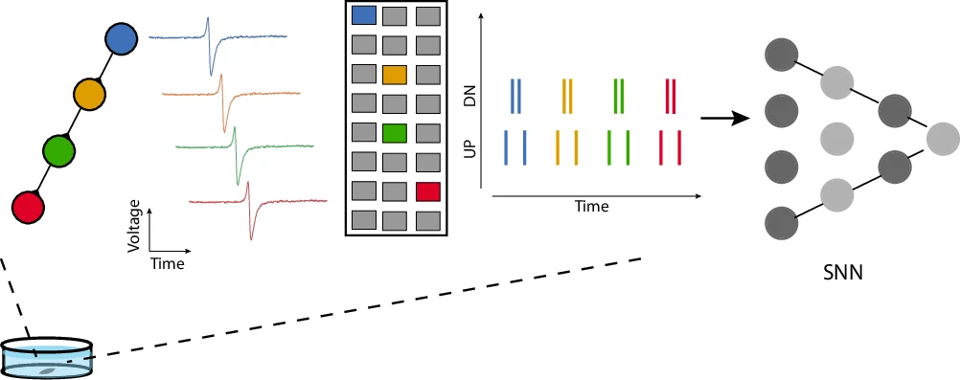BEL contribution to paper on event-based microelectrode arrays
BEL contribution to paper on self-clocked microelectrode array, which digitizes bio-signals at the pixel level by encoding changes as asynchronous digital address-events when they exceed a certain threshold.


Bio-signal sensing and acquisition is an important task in medical bioelectronics. Traditional methods involve high sampling rates and produce large volumes of mostly irrelevant data at high energy consumption. The group of Giacomo Indiveri now introduced a self-clocked microelectrode array (MEA) that digitizes bio-signals at the pixel level by encoding changes as asynchronous digital address-events only when they exceeded a certain threshold, which significantly reducied off-chip data transmission. The novel MEA comprises a 64 × 64 electrode array, an asynchronous 2D-arbiter, and an Address-Event Representation (AER) communication block. Each pixel operates autonomously, monitoring voltage fluctuations caused by cellular activity and producing digital pulses in case of significant events. Positive and negative signals were encoded as “up” and “down” events and are routed off-chip via the asynchronous arbiter. The paper by Cartiglia et al. with contributions of BEL coworkers (M. Cartiglia, et al., "A 4096 channel event-based multielectrode array with asynchronous outputs compatible with neuromorphic processors", Nature Communications 2024, Vol. 15, Article 7163) includes results of the chip characterization and measurements with electrogenic cells. Additionally, the MEA was interfaced to a mixed-signal neuromorphic processor, demonstrating a prototype for event-based bio-signal sensing and processing.